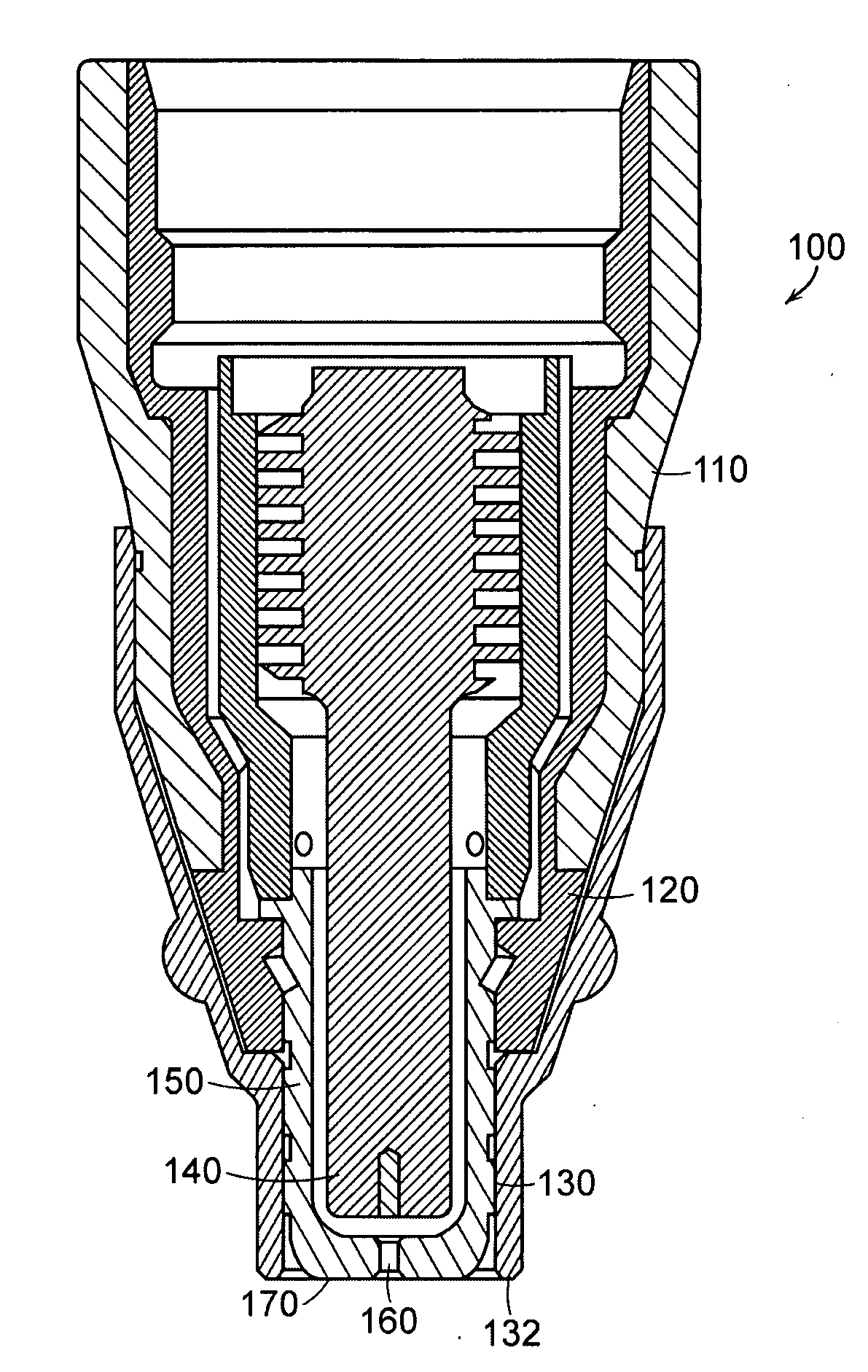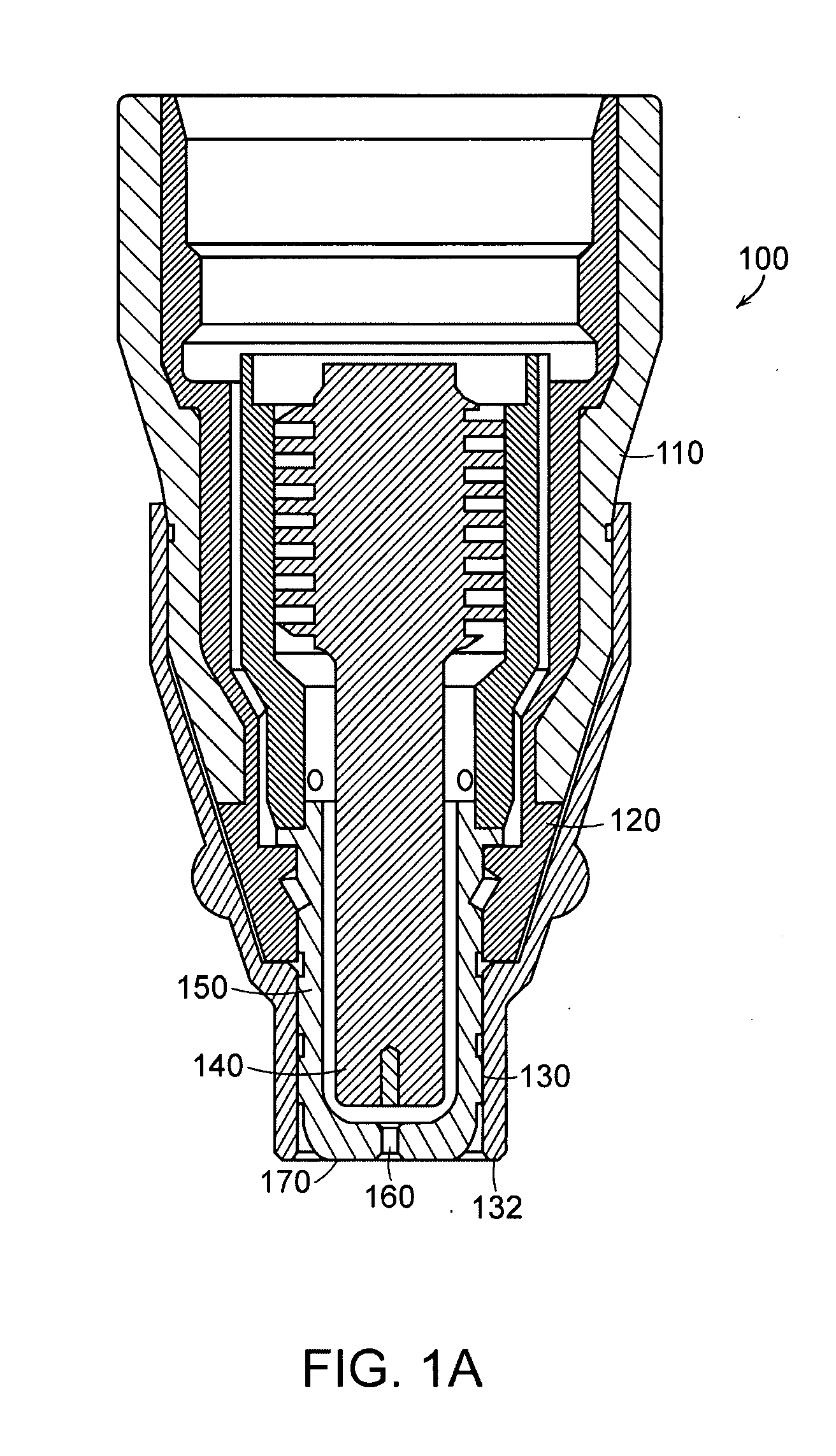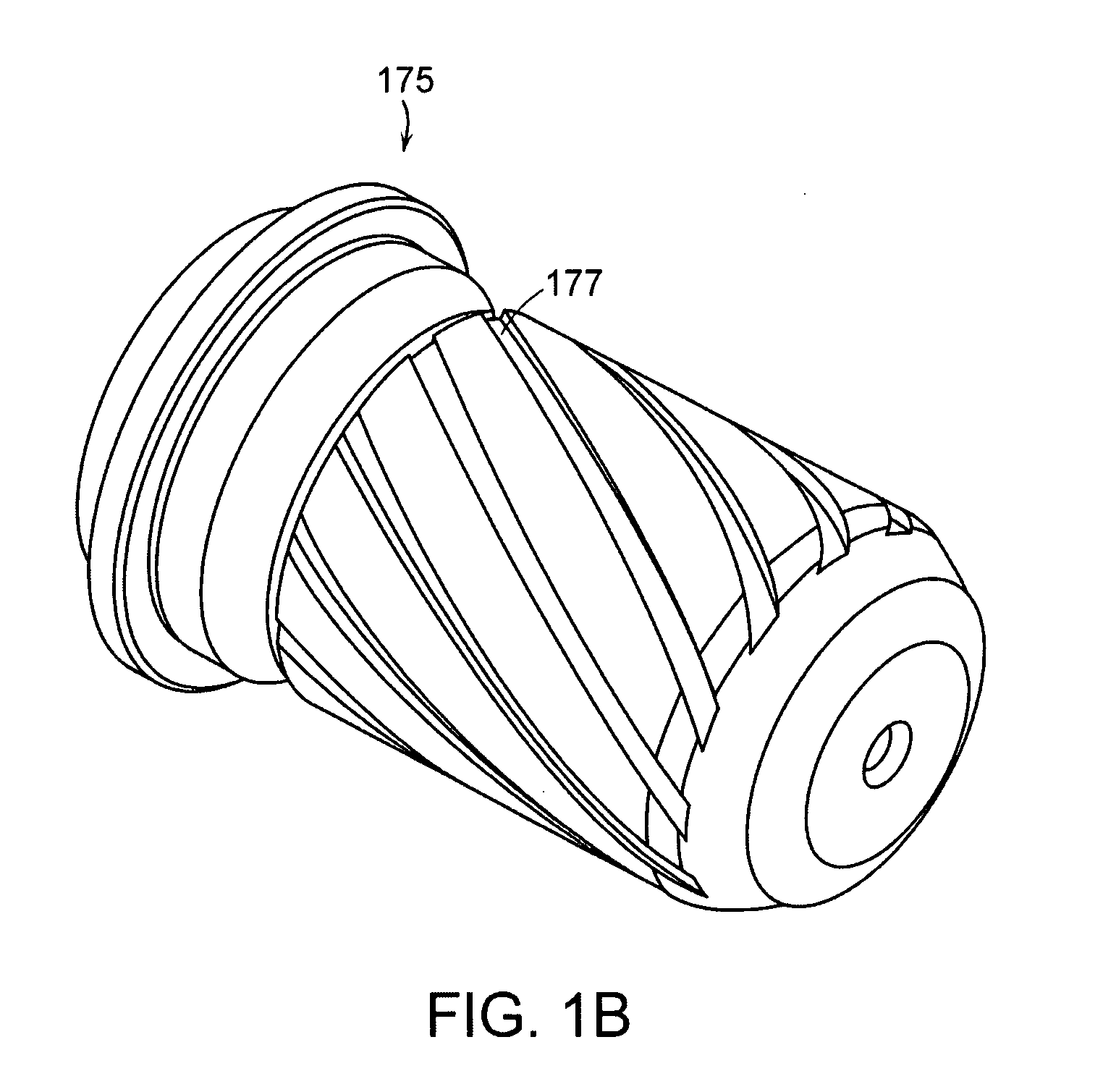Dielectric devices for a plasma arc torch
a plasma arc torch and dielectric device technology, which is applied in the direction of gas-filled discharge tubes, manufacturing tools, and solventing apparatus, can solve the problems of frequent nozzle replacement, increased operator visibility, and increased nozzle wear, so as to reduce the width of the torch head, the effect of reducing the double arcing event and increasing operator visibility
- Summary
- Abstract
- Description
- Claims
- Application Information
AI Technical Summary
Benefits of technology
Problems solved by technology
Method used
Image
Examples
Embodiment Construction
[0029]The present invention features a device for a plasma arc torch that minimizes the possibility of double arcing and maximizes cutting accuracy by improving operator visibility and edge starting (i.e., minimizing nozzle stickiness).
[0030]FIG. 1A shows a vertical cross sectional view of one embodiment of a plasma arc torch 100. The torch includes an electrode 140, a nozzle 150 with a central exit orifice 160, a retaining cap including an inner portion 120 and an outer portion 110, and a dielectric shield 130. The dielectric shield 130 can be positioned to contact the nozzle 150 without the threat of double arcing, due to the non-conductive nature of dielectric materials. That is, the dielectric shield 130 electrically insulates the conductive nozzle 150. The dielectric shield 130 extends at least to the end face of the nozzle 170 and is sized so that the nozzle 150 does not protrude pass an end face 132 of the shield 130. The plasma arc torch 100 produces a plasma arc, which is a...
PUM
| Property | Measurement | Unit |
|---|---|---|
| dielectric | aaaaa | aaaaa |
| electrically conductive | aaaaa | aaaaa |
| dielectric shield | aaaaa | aaaaa |
Abstract
Description
Claims
Application Information
 Login to View More
Login to View More - R&D
- Intellectual Property
- Life Sciences
- Materials
- Tech Scout
- Unparalleled Data Quality
- Higher Quality Content
- 60% Fewer Hallucinations
Browse by: Latest US Patents, China's latest patents, Technical Efficacy Thesaurus, Application Domain, Technology Topic, Popular Technical Reports.
© 2025 PatSnap. All rights reserved.Legal|Privacy policy|Modern Slavery Act Transparency Statement|Sitemap|About US| Contact US: help@patsnap.com



